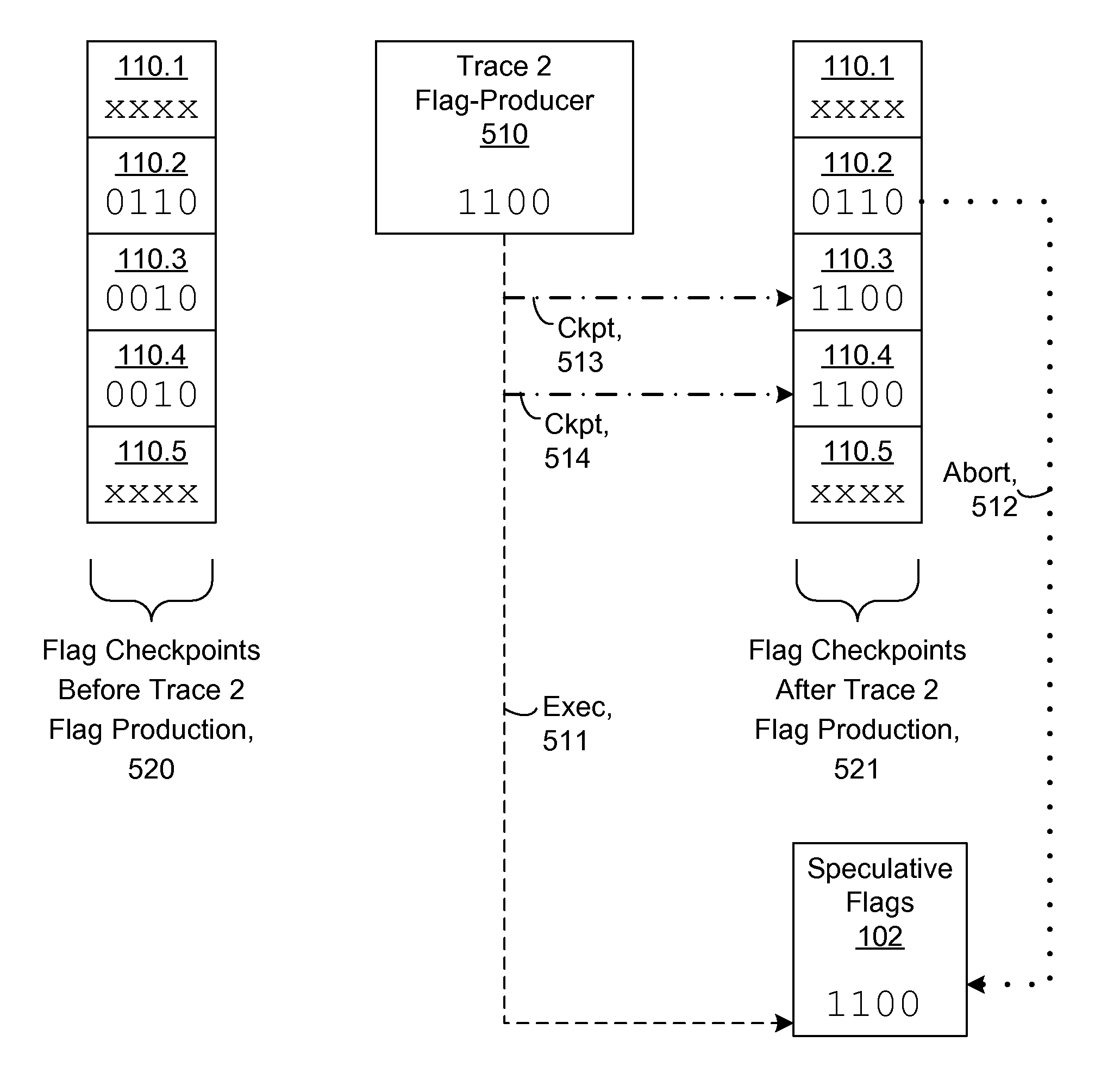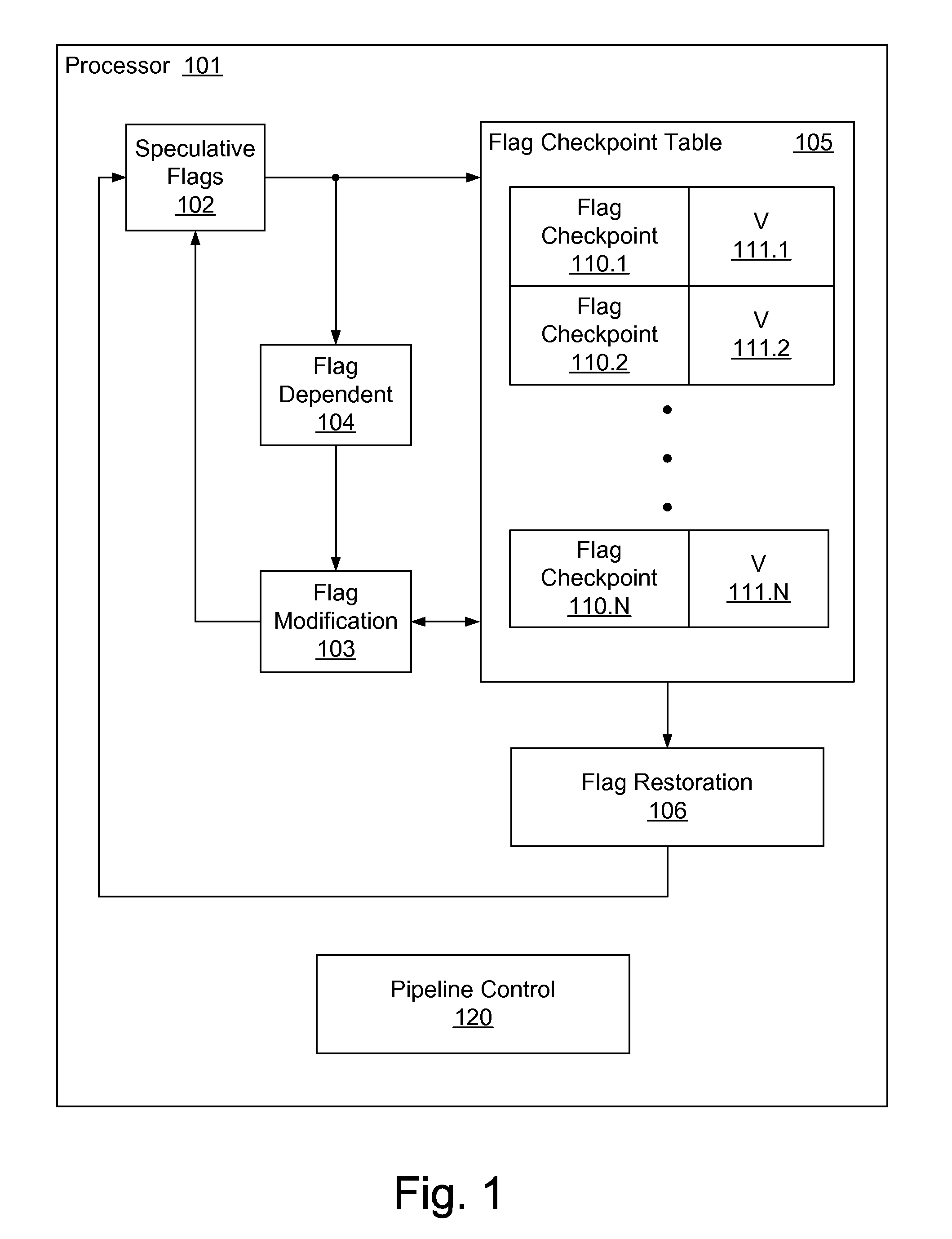Flag management in processors enabled for speculative execution of micro-operation traces
a micro-operation trac and flag management technology, applied in the direction of program control, instruments, computation using denominational number representation, etc., can solve the problems of increased power consumption, increased work expense, and inability to write accurate values
- Summary
- Abstract
- Description
- Claims
- Application Information
AI Technical Summary
Benefits of technology
Problems solved by technology
Method used
Image
Examples
operational examples
[0080]FIG. 5 illustrates an example of operation of an embodiment according to the first technique for checkpoint / restore of flags with respect to atomic traces. “Flag Checkpoints Before Trace 2 Flag Production”520 illustrates exemplary information retained in various Flag Checkpoints 110.1-110.5 (as embodied in Flag Checkpoint Table 105 of FIG. 1) before changes to the flags have been produced by processing relating to “Trace 2 Flag-Producer”510. “Flag Checkpoints After Trace 2 Flag Production”521 illustrates exemplary information retained in Flag Checkpoints 110.1-110.5 after changes to the flags have been produced by processing relating to “Trace 2 Flag-Producer”510.
[0081]More specifically, before processing relating to “Trace 2 Flag-Producer”510, the flag checkpoints corresponding to Traces 1-5 (Flag Checkpoints 110.1-110.5, respectively) contain values ‘xxxx’, ‘0110’, ‘0010’, ‘0010’, and ‘xxxx’, respectively. Note that each flag checkpoint in the illustrated example operation i...
PUM
 Login to View More
Login to View More Abstract
Description
Claims
Application Information
 Login to View More
Login to View More - R&D
- Intellectual Property
- Life Sciences
- Materials
- Tech Scout
- Unparalleled Data Quality
- Higher Quality Content
- 60% Fewer Hallucinations
Browse by: Latest US Patents, China's latest patents, Technical Efficacy Thesaurus, Application Domain, Technology Topic, Popular Technical Reports.
© 2025 PatSnap. All rights reserved.Legal|Privacy policy|Modern Slavery Act Transparency Statement|Sitemap|About US| Contact US: help@patsnap.com



